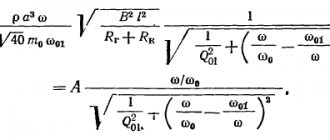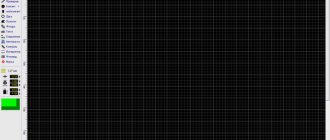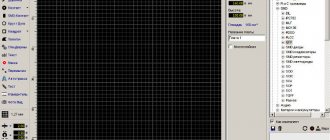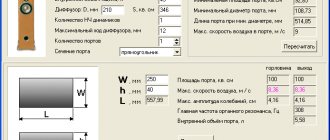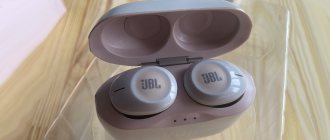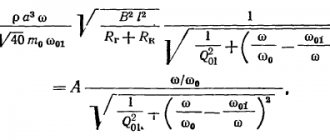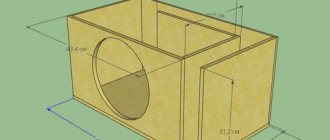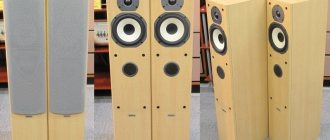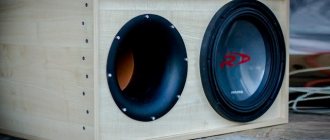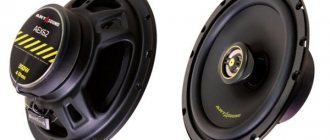07.10.2019
How much will it cost to send your cargo to its destination? To answer this question, you need to know its volume in cubic meters, since transport companies most often indicate the cost of services in these units of measurement in their price lists.
Cardboard boxes are the most profitable and convenient type of packaging for most goods. When choosing corrugated packaging for your products, you need, first of all, to calculate the volume of boxes and order the required number of boxes so as not to transport air and not overpay for transport services.
If, as a result of the calculation, it turns out that you require corrugated packaging of individual sizes, ours will produce the required quantity to order. Let's look at how to correctly calculate the volume of a cardboard box.
How to calculate the volume of a box in M3
When packing and transporting goods, entrepreneurs wonder how to do it correctly in order to save time and money.
Calculation of container volume is an important point in delivery. Having studied all the nuances, you can choose the required box size. How to calculate the volume of a box? In order for the cargo to fit into the box without any problems, its volume must be calculated using the internal dimensions.
Use it to calculate the volume of a box in the shape of a cube or parallelepiped. It will help speed up the settlement process.
The cargo that needs to be placed in the container can be of a simple or complex configuration. The dimensions of the box should be 8-10 mm larger than the most protruding points of the load. This is necessary so that the item fits into the container without difficulty.
External dimensions are used when calculating the volume of boxes in order to correctly fill the space in the back of a vehicle for transportation. They are also needed to calculate the area and volume of the warehouse required to store them.
First, measure the length (a) and width (b) of the box. To do this, we will use a tape measure or ruler. The result can be recorded and converted into meters. We will use the international measurement system SI. According to it, the volume of the container is calculated in cubic meters (m3). For containers whose sides are less than a meter, it is more convenient to take measurements in centimeters or millimeters. It must be taken into account that the dimensions of the cargo and the box must be in the same units of measurement. For square boxes, the length is equal to the width.
Then we will measure the height (h) of the existing container ─ the distance from the bottom flap of the box to the top.
If you made measurements in millimeters, and the result needs to be obtained in m3, we convert each number into m. For example, there is data:
- a=300 mm;
- b=250 mm;
- h=150 mm.
Considering that 1 m = 1000 m, let’s convert these values into meters and then substitute them into the formula.
- a=300/1000=0.3 m;
- b=250/1000=0.25 m;
- h=150/1000=0.15 m.
Formulas
- V=a*b*h, where:
- a – base length (m),
- b – base width (m),
- h – height (m),
- V—volume (m3).
Using the formula for calculating the volume of a box we get:
V=a*b*h =0.3*0.25*0.15=0.0112 m3.
This method can be used when calculating the volume of a parallelepiped, that is, for rectangular and square boxes.
Box base area
The above formulas are used to calculate the volume of containers in the shape of a parallelepiped. For non-standard shapes, the area and volume of the box is calculated using the formula:
- V=S*h, where:
- S – base area (m2)
- h – height (m),
- V - volume (m 3).
The formula for the area S of the base of the box (container) must be changed depending on the shape of the container.
S=a*b; S=a 2 =a*a
we take it in the case when we have a rectangular or square-shaped cardboard product.
Some goods that require transportation have special parameters.
In such cases, it is necessary to pack the goods in cardboard containers of complex configuration, which have a non-standard shape and an exclusive design that can distinguish its contents from similar products. To do this, you need to know how to calculate the area of a box of a different configuration. We will use formulas to find the area of a polygon: triangle, hexagon and octagon.
S=1/2*a*h
This formula can be used to calculate the area of the base of your container if it has the shape of a triangle. By multiplying the resulting value by the height, you get the volume of the prism-shaped box.
In other cases, look at what shape is at the base of a particular box, take the formula to find its area, and then multiply the result by the height.
Often people buy aquarium fish without thinking about what type of tank they need. When making such a purchase, it is very important to calculate the volume of the aquarium in liters. A lot depends on this characteristic: how many pets will live there, the volume of water, the amount of soil, etc. In fact, every adult knows how to calculate the volume of an aquarium; you just need to remember the knowledge acquired at school.
How to calculate the weight of a box?
Before ordering transport for transporting goods packed in cardboard boxes, you need to calculate the weight of the cargo (gross), which consists of the weight of the product itself (net) and the weight of the packaging. The weight of a corrugated cardboard box (M) is calculated by the formula:
M=S*P
where S is the area of the blank for the corrugated box, which we found using the formula above, and P is the average density of corrugated cardboard.
The density of corrugated cardboard P is the mass of 1 m2 of corrugated cardboard, and is measured in kg/m2 or g/m2. The exact density value depends on the brand of cardboard and the weight of the layers used in the production of corrugated cardboard.
The average density of three-layer corrugated cardboard is P = 350 g/m2. Therefore, the weight of a three-layer box is calculated by the formula (kg): M=S*0.35
The average density of five-layer corrugated cardboard is P = 580 g/m2. Therefore, the weight of a five-layer box is calculated by the formula (kg): M=S*0.58
It should be taken into account that it will be difficult to calculate the weight of corrugated packaging with complex die-cuts or additional elements, and you are unlikely to be able to do this yourself. For help in this matter, you can contact our managers.
Getting ready to determine the volume of concrete - how to calculate without errors
When preparing to perform calculations, you should remember that the need for a concrete mixture is determined in cubic meters, and not in kilograms, tons or liters. As a result of manual or software calculations, the volume of the binder solution will be determined, and not its mass. One of the main mistakes that novice developers make is performing calculations before the type of foundation has been determined.
The decision on the foundation design is made after completing the following work:
- carrying out geodetic measures to determine the properties of the soil, the level of freezing and the location of aquifers;
- calculations of the load capacity of the base. It is determined based on weight, structural features and natural factors.
How to calculate the amount (volume) of concrete mixture
It is easy to calculate the volume of concrete using a special program or online calculator that takes into account many factors:
- type of foundation being constructed;
- dimensions of the foundation, its configuration;
- brand of mixture used for concreting;
- depth of soil freezing.
The accuracy with which the volume of concrete is calculated depends on the data used for the calculation.
They are different for each type of foundation:
when calculating the strip base, its dimensions and shape are taken into account; for a columnar base, it is important to know the number of concrete columns and their sizes; You can calculate a cube of concrete for a solid slab based on its thickness and dimensions.
The accuracy of the result depends on the completeness of the data used for calculation.
Types of pots for indoor plants, differences
In order for a houseplant not only to please the eye, but also to fit organically into the interior, you should choose the right container. Even the most exotic and beautiful flower in an unsightly and old pot will lose its charm. At the moment there is no shortage of choice. However, it is worth understanding what types of pots for indoor plants exist and how they differ, and whether it is worth overpaying.
Plastic pots
The most common and cheapest are plastic pots. Now manufacturers produce a wide variety of colors and shapes. Plastic pots can be seen in any store or market.
The advantages of such pots include their low cost, light weight and durability. It is wise to place such pots on shelves, walls and other surfaces that are dangerous to overload. If dropped from a height, the pot will remain unharmed.
It is worth noting that such pots look cheap and are very difficult to fit into the interior.
Clay pots
Clay pots have always been highly valued. This is a natural material that is well accepted by plants. Even a clay pot coated with ordinary varnish looks very pleasing to the eye. And if you choose one painted with various glazes, then such a pot can become the pride of any living room.
The disadvantages include their high cost and small range.
Ceramics
This is the most popular material for making pots nowadays. It looks much richer than plastic and has more variety than clay pots. Nowadays, you can find ceramic pots in all sizes, shapes, colors and patterns. The plant feels good in such containers.
This pot is quite heavy, making it difficult to place. Modern ceramic flowerpots are quite durable and some can even survive a hit to the ground.
Glass
Vases made of translucent glass look sophisticated and elegant. The cracked glass style pots are especially distinctive. Their main advantage is translucency, thanks to which you can see the roots of the plant. Most often they are used for orchids.
The biggest disadvantage of such pots is their high cost and fragility.
Natural materials
Pots made of wicker, wood, bamboo and even textile are also widespread. They won't fit in every living room. They can also be called impractical. They are usually used in the form of flowerpots or hidden inside a transparent plastic container.
The main criterion for choosing one of the above-described types of pots for indoor plants should be high quality. Cheap plastic cracks over time, and low-quality paint on ceramics swells and peels.
However, if you choose a temporary pot, then it is better to choose a plastic option and not overpay.
In the long term, it is better to spend money and buy a good ceramic or glass pot that will delight you and highlight the unique style of your interior.
Task 19
The further you go, the more interesting the tasks become. This number already resembles an Olympiad problem, albeit for high school.
If you want to pass basic mathematics and solve number 19, you need to get a little familiar with the properties of integers and the signs of divisibility. Sometimes the solution can even be found by selection! Try it if time on the Unified State Exam allows.
For example, signs of divisibility will help us here. There is no separate sign for 12, so we need to decompose it into different factors, for which there is a sign. For example this:
- 3: for a number to be divisible by 3, the sum of its digits must be divisible by 3;
- 4: For a number to be divisible by 4, the number formed by the last two digits must be divisible by 4.
Let's start with the sign for four. So far our number ends in 13. It is not divisible by 4. Let's try to cross out the last digit, and the number will end with 61. That also doesn't work. Let's cross out one more. Now at the end of 76... Here it is! The original number remains 751576, two digits have already been crossed out, only one remains to be removed.
Now let's check the sign for three: 7+5+1+5+7+6 = 31. What is the nearest number divisible by 3? Of course, 30. If we cross out the one, everything will add up.
Answer: 75576. Of course, this is not the only solution.
You can try to find a task of this type; there are not too many locations. We will still try to reason to reduce the number of possible options.
For a number to be divisible by 10, it must end in 0. For example, this happens if you add 7 + □7 + □□6. It's a little easier now. We'll just pick up the rest. The problem would fit 7 + 27 + 356 = 390.
Answer: 390.
Steps
Method 1 of 2:
Calculating the volume of a rectangular object (in cubic centimeters)
- 1
Measure the length, width and height of the object (in centimeters).
To do this, measure the required values using a ruler or tape measure, or convert the values you know into centimeters. X Source of information
For example, if you want to know the volume of a refrigerator, find its length, width and height (in centimeters). Let's assume that your refrigerator is 100 cm high, 50 cm wide, and 40 cm long. - 2
Record the height of the object.
In our example, write down that height = 100 cm.
You can multiply quantities in any order. For example, start from the top.
- 3
Multiply the height by the width.
Then multiply the first value by any of the remaining ones (any). For example, multiply the height by the width. X Source of information
In our example, multiply 100 by 50: 100 × 50 = 5000.
- 4
Multiply the result by the length of the object.
In our example, multiply 5000 by 40: 5000 × 40 = H 200,000.
The last step is to multiply the result by the remaining value. For example, multiply the product of height and width by length.
- 5
Write the answer in cubic centimeters so that anyone can understand it.
- Units of measurement are written as follows: cubic centimeters
centimeters cubed
- cm^3
- cm3
Method 2 of 2:
Calculating the volume of other shapes
- 1
Volume of a cube
V= L3, where V is volume, L is side. A cube is a rectangular parallelepiped with all sides equal. X Source of information
Thus, the formula for calculating the volume of a cube can be written as: length × width × depth = length × length × length = length3. To obtain volume in cubic centimeters, measure in centimeters.
- 2
Cylinder volume
V = hπr2, where V is the volume, h is the height, r is the radius of the cylinder. A cylinder is a geometric body that is bounded by a cylindrical surface and two parallel circular planes. X Source of information
To obtain volume in cubic centimeters, measure in centimeters.
- 3
Cone volume
V = (1/3)hπr2, where V is the volume, h is the height, r is the radius of the cone. A cone is a body with a round base and an apex above it. To obtain volume in cubic centimeters, measure in centimeters. X Source of information
- 4
Ball volume
V = 4/3πr3, where V is the volume, r is the radius of the ball. A ball is a completely round body. X Source of information
To obtain volume in cubic centimeters, measure in centimeters.
- If you are unsure of the accuracy of your calculations, check your answer by using a calculator or the help of another person who understands mathematics.
- Cubic centimeters is a unit of measurement of volume, that is, a quantitative characteristic of the space occupied by the body.
- To accurately measure values, use a ruler or tape measure (especially if you are making important measurements).
How to calculate the volume of a tank made in the form of a cylinder
Similar geometric shapes are used for storing food, transporting fuel and other purposes. Many people do not know how to calculate the volume of water, but we will describe the main nuances of this process further in our article.
The height of the liquid in a cylindrical container is determined using a special device called a meter rod. In this case, the tank capacity is calculated using special tables. Products with special volume measurement tables are rare in life, so let’s approach the problem in a different way and describe how to calculate the volume of a cylinder using a special formula - V=S*L, where
- V is the volume of a geometric body;
- S – cross-sectional area of the product in specific units of measurement (m³);
- L is the length of the tank.
The L indicator can be measured using the same tape measure, but the cross-sectional area of the cylinder will have to be calculated. The S indicator is calculated using the formula S=3.14*d*d/4, where d is the diameter of the cylinder circumference.
Now let's look at a specific example. Let's say the length of our tank is 5 meters, its diameter is 2.8 meters. First, let's calculate the cross-sectional area of the geometric figure S = 3.14 * 2.8 * 2.8/4 = 6.15 m. And now you can start calculating the volume of the tank 6.15 * 5 = 30.75 m³.
An aquarium is a glass vessel filled with water in which fish and plants live. When looking at an aquarium, a question spontaneously arises for the owner of an apartment or office - how many liters are in this aquarium?
The same question arises when you read the instructions for preventive and curative medications. Therefore, a very interesting and controversial question is “How to calculate the volume of an aquarium?”
.
Of course, you can calculate it by pouring water out of it with a liter jar, but it is much easier to do this using a formula, and measuring with jars can be left for small round aquariums.
Concept of volume
To easily calculate the volume of any figure, you need to understand the definitions.
Volume is a quantitative characteristic of the space occupied by a body or substance.
In other words, this is how much space an item takes up.
Volume is measured in volume units (units of measuring the size of the space occupied by the body), that is, in cubic meters, centimeters, millimeters.
A cube with an edge of 1 cm can be taken as a unit of volume measurement, that is, cubic centimeter (cm3), cubic millimeter (1 mm3), cubic meter (1 m3).
Volume is always expressed in positive numbers. This number shows exactly how many units of measurement there are in the body. For example, how much water is in the pool, wine in the barrel, soil in the flowerbed.
Two properties of volume
|
Any three-dimensional body has volume. It turns out that if we wish, we can calculate the volume of a mug, smartphone, vase, cat - anything.
Tape
The most popular foundation for the construction of a private house is considered to be a strip foundation. It is a kind of closed ribbon of concrete running under all the load-bearing walls of the building.
How to calculate how many cubes of concrete are needed for the foundation? Calculators that help determine the consumption of cement-sand mortar for pouring are available on many construction-related websites, one of which is presented at the end of this material. To calculate the volume in cubic meters, you need to know the linear dimensions of the structure: height, width and total length of the base.
Concreting of the strip base occurs by pouring the finished cement-sand mixture into wooden formwork with pre-installed reinforcing mesh. Large fractions (gravel, crushed stone) are added to the solution to obtain higher strength characteristics of the foundation.
The dimensions of the base depend on the dimensions of the building that is planned to be erected. Typically, the width of the foundation strip is at least 300 mm, the height of the ground part is from 400 mm, and the depth can reach 1500-2500 mm, depending on the availability of groundwater, freezing depth and the desire to equip a basement. It is not recommended to install strip foundations on heaving soils if the formwork is buried below the freezing depth.
The length of the foundation will be equal to the total length of all external walls, including the internal load-bearing wall, under which the foundation is also installed. As a result, having received all the required values, you can calculate the volume of concrete for the foundation. In this case, a calculator may not be required - just multiply all the indicators in meters and get the desired number in cubic meters.
The calculation formula looks like this:
V=h*b*l, where:
- V – volume of solution in m3;
- h – height in m;
- b – width in m;
- l – tape length in m.
For example, for a building measuring 6x6 m and one internal load-bearing wall, with a foundation height of 2 m and a width of 0.4 m, the volume of mortar for pouring will be: V = 2 * 0.4 * 30 = 24 m3. With the same width and height of the foundation, for a house measuring 10x10 and two load-bearing internal walls, the calculation will look like this: V=2*0.4*60=48 m3.
This calculation allows you to calculate the almost exact cubic capacity of the solution, but it should be remembered that during transportation some of the concrete is lost, and also if the formwork is loose, part of the concrete solution may leak out, but at the same time there is an additional internal volume occupied by the reinforcement frame. Therefore, it would be correct to introduce a correction factor in the direction of increasing the calculated value by 2%.
As a result, we obtain a more accurate formula for calculating the volume of concrete for a strip foundation:
V=h*b*l + 0.02*(h*b*l)
The resulting value is rounded to the nearest whole number. For our examples, the refined calculation will look like this: for a house 6x6 V=24+0.02*24=24.48 (25) m3, for a house 10x10 V=48+0.02*48=48.96 (49) m3 .
Why are the numbers in your passport not accurate?
The actual tank capacity is usually greater than the data in the car documents. Therefore, if the vehicle’s passport indicates 60-65 liters, the actual volume is 70-75 liters. Most car manufacturers add about 10-15%.
One of the reasons for the differences due to which the figures in the passport are inaccurate is the need for a reserve to compensate for the expansion of the fuel as the temperature changes. The pressure inside the container does not increase, and fuel does not leak out. The second reason is protection against fuel leaks when the car, and therefore the tank, is tilted.
Why are calculations necessary?
It would seem that there is nothing simpler - buy a fish house, all the necessary components and place underwater inhabitants there. In fact, if the owner of the fish has not correctly calculated the capacity of the tank, her pets may not live in it for long.
- to understand what number of fish and plants will be optimal for a certain pet house;
- determine the amount of soil and fertilizers;
- Even when calculating the dosage of medications for pets, you need to know the aquarium data.
The fish house should be cozy for its inhabitants, then there will be no problems with the health of the pets.
What criteria do we use to calculate cargo volume?
Firstly, everyone knows that every detail is important in the delivery process, and it is important to calculate the volume of the cargo as a whole without errors. As already mentioned, our volume calculator will help you calculate the volume of cargo; it will do it quickly and reliably! The second is a volume calculator, start it on our website, it has already been said above, as you can see, we care about our clients
A volume calculator is what can make working with calculations as easy as possible and completely kill your doubts
The second is a volume calculator, you can find it on our website, it has already been said above, as you can see, we care about our clients. A volume calculator is what can make working with calculations as easy as possible and completely kill your doubts.
What do we give you?
Conditions for the ability to calculate the volume of cargo independently, i.e. these include formulas, explanations for them, and even a calculator. With such capabilities, the volume of cargo can be calculated in a matter of minutes, the main thing is to avoid making any mistakes.
What else is needed?
Nowadays, entrepreneurship rests on Chinese production of goods, but where did the need to calculate the volume come from? It is necessary to calculate the volume in order to find out the total volume of the cargo, and then select the type of transport.
What is the calculation of delivery volumes? And what role does he play?
Volume calculation is how much, you have already understood a very important stage in delivery, and you need to trust it in the reliable hands of professionals. The calculation of cargo volume must be done carefully, taking into account all dimensions and converting them into cubic meters.
But unfortunately, not everyone copes with these calculations.
Back in school days, we studied how to calculate the volume of cargo in m3, but unfortunately, you won’t remember all of this. How to calculate the volume of cargo in m3 - there are times when this question comes first, for example during delivery.
That's what this page exists for!
We are ready to explain how to calculate the volume of m3, because you can do this yourself or to check our calculations. How to calculate the volume of m3, to do this you need to convert the dimensions into meters, then multiply, formula: L*W*H.
After all, this page is intended to help you calculate delivery.
To calculate the volume of a box, you don’t have to try to do it yourself, you just need to fill in the empty fields. The volume of the box will be calculated automatically by our calculator; if in doubt, check it yourself.
This is why we reminded you of the volume formula.
Why do you even need to know how to calculate cubic capacity?
You need to calculate the volume of cargo in cubic meters in order to submit the correct application for its transportation. Calculating the volume of cargo in cubic meters, i.e. knowing the volume itself will help you decide which type of delivery is right for you.
How to calculate the volume of cargo correctly?
If you need to transport cargo over a long distance, entrust the calculations to determine the volume of cargo to the professionals of KVAD Logistics.
Since many of the company’s clients send cargo at the same time, it is possible to place compact cargo in one vehicle, and large and heavy cargo in another. As a result, you will have to pay less, since transportation costs will be distributed more evenly and among all participants in proportion to the weight and volume of the products sent. You don't have to think about how to calculate the volume of cargo. We will carry out this procedure for you and select the most profitable transportation options for you.
Measure all required distances in meters.
The volume of many three-dimensional figures can be easily calculated using the appropriate formulas. However, all values substituted into formulas must be measured in meters. Therefore, before plugging values into the formula, make sure that they are all measured in meters, or that you have converted other units of measurement to meters.
- 1 mm = 0.001 m
- 1 cm = 0.01 m
- 1 km = 1000 m
To calculate the volume of rectangular figures (cuboid, cube), use the formula:
volume = L × W × H
(length times width times height). This formula can be considered as the product of the surface area of one of the faces of the figure and the edge perpendicular to this face.
- For example, let's calculate the volume of a room with a length of 4 m, a width of 3 m and a height of 2.5 m. To do this, simply multiply the length by the width and by the height: 4 × 3 × 2.5
- = 12 × 2,5
- = 30. The volume of this room is 30 m 3
.
To calculate the volume of figures in the form of a cylinder, use the formula:
pi
× R 2 × H. Calculating the volume of a cylinder comes down to multiplying the area of the circular base by the height (or length) of the cylinder. Find the area of the circular base by multiplying pi (3.14) by the square of the radius of the circle (R) (radius is the distance from the center of the circle to any point on that circle). Then multiply the result by the height of the cylinder (H) and you will find the volume of the cylinder. All values are measured in meters.
- For example, let's calculate the volume of a well with a diameter of 1.5 m and a depth of 10 m. Divide the diameter by 2 to get the radius: 1.5/2 = 0.75 m. (3.14) × 0.75 2 × 10
- = (3,14) × 0,5625 × 10
- = 17.66. The volume of the well is 17.66 m3
.
To calculate the volume of a ball, use the formula:
4/3 x
pi
× R 3 . That is, you only need to know the radius (R) of the ball.
- For example, let's calculate the volume of a balloon with a diameter of 10 m. Divide the diameter by 2 to get the radius: 10/2 = 5 m. 4/3 x pi × (5) 3
- = 4/3 x (3.14) × 125
- = 4,189 × 125
- = 523.6. The volume of the balloon is 523.6 m 3
.
To calculate the volume of cone-shaped figures, use the formula:
1/3 x
pi
× R 2 × H. The volume of a cone is equal to 1/3 of the volume of a cylinder, which has the same height and radius.
- For example, let's calculate the volume of an ice cream cone with a radius of 3 cm and a height of 15 cm. Converting to meters, we get: 0.03 m and 0.15 m, respectively. 1/3 x (3.14) × 0.03 2 × 0.15
- = 1/3 x (3.14) × 0.0009 × 0.15
- = 1/3 × 0.0004239
- = 0.000141. The volume of an ice cream cone is 0.000141 m3
.
To calculate the volume of irregular shapes, use several formulas.
To do this, try to break the figure into several figures of the correct shape. Then find the volume of each such figure and add up the results.
- For example, let's calculate the volume of a small granary. The warehouse has a cylindrical body with a height of 12 m and a radius of 1.5 m. The warehouse also has a conical roof with a height of 1 m. By calculating the volume of the roof separately and the volume of the body separately, we can find the total volume of the granary: pi × R 2 × H + 1/3 x pi × R 2 × H
- (3.14) × 1.5 2 × 12 + 1/3 x (3.14) × 1.5 2 × 1
- = (3.14) × 2.25 × 12 + 1/3 x (3.14) × 2.25 × 1
- = (3.14) × 27 + 1/3 x (3.14) × 2.25
- = 84,822 + 2,356
- = 87.178. The volume of the granary is 87.178 m3
.
How to make the calculation?
To understand how to find out the volume of an aquarium, you need to resort to the queen of all sciences - mathematics. Calculations will help determine how many liters will be needed to fill it, which heater and water filter to choose, and what species of fish can exist in it. Correct calculations are the key to the longevity of underwater inhabitants.
To calculate the volume of the aquarium, it is worth preparing special measuring instruments. The volume of an aquarium can be calculated using a calculator, tape measure and a pencil with a piece of paper. When you have prepared everything you need, you need to follow the instructions and remember what you went through at school:
- to calculate the volume of an aquarium that has the shape of a parallelogram (this is a standard type of product) you need to measure its outside length, depth and width;
- These three values in the aquarium should be written down on a piece of paper, they will be useful for further calculations;
- The displacement of the tank using measured numbers is calculated by the formula: internal length × internal width × internal height;
- the question remains of how to calculate the internal quantities, for this you need to measure the wall of the tank, its thickness;
- the resulting figure must be multiplied by 2, then subtracted from the previously obtained external measurements, which will help obtain internal numbers;
- then we substitute the values into the formula described above and convert the resulting value into cubic liters (1 m 3 = 1000 l) - this will be the volume of the aquarium or displacement.
There is an additional specific method for measuring the displacement of a tank. It's a little simpler than the previous one. It is necessary to make calculations using the formula: (H × D × D) × 0.001 (where H is height in cm, D is length in cm, D is depth in cm). This way you can subtract the liters correctly.
Reservoirs and tanks are used for transporting and storing various types of fuels, oil, water and gas, some building materials, chemicals, and food products. Many people do not know how to calculate the volume of a container, because they can have different geometric shapes:
- Cone;
- Cylinder;
- Spheres;
- Rectangular parallelepiped.
In our article we will get acquainted with the nuances of calculations for specific geometric bodies.
Calculation of the volume of standard rectangular and square boxes
This type of calculation of the volume of cardboard boxes is perhaps the simplest, since it is familiar to all of us since school.
The volume in this case reflects the dimensions of the object in a three-dimensional plane and for any rectangular or square cardboard box will determine its capacity. To determine the volume, you will need to perform a few simple calculations: measure the length, width and height of the box, and then multiply the resulting values. If you are going to select a cardboard box, knowing only the dimensions of the product or cargo that will be packed in it, then you should measure the dimensions of the cargo and add 5-10 millimeters to each of the dimensions (length, width, height), and then multiply the resulting values. Now let's analyze these mathematical operations more clearly and step by step: In the international measurement system, to calculate the volume of a rectangular or square object (in our case, a cardboard box), the formula is used: Vm 3 = L x W x H
- V is, in fact, the volume that we need to calculate
- L – box length
- W – box width
- H – height of the box (the term “depth” can also be used, which, in general, is the same thing)
Let us analyze this formula for calculating the volume of cardboard boxes using a specific example with explanations. Let's say you want to calculate the volume of a four-flap cardboard box for packaging, say, electronics and household appliances. How to do it? We answer.
To begin with, you should immediately decide which units of measurement you will use in your measurements - meters, centimeters or millimeters
It is important that all measurements of your box parameters are the same to avoid inaccuracies and confusion. And the second important point is the internal and external dimensions of the box
To accurately measure the volume of a cardboard box, you need to understand why you need the exact volume of this box. If you want to know the volume in order to accurately calculate the size of the cargo that will be packed in it, then use the internal dimensions. And if you need to calculate the volume of a cardboard box in order to maximally fill the body of a vehicle with products packaged in such boxes, then use the external dimensions.
This point is very important if you want to get accurate data without any degree of error.
We've sorted out the theory, now let's move on to practical actions - we measure our box and calculate its volume.
Step #1
First, you should measure the length of the box. Look at the box from top to bottom and you will see that it is shaped like an equilateral rectangle. The longest side of the box is the length, designated by the letter “L” (from the English “length” - length). Measure and record the measurement result somewhere so you don’t forget.
Step #2
Next we need to measure the width of our box. In any rectangular cardboard box, the width is the shorter side. According to the international measurement system, the width of a cardboard box is indicated by the letter “W” (from the English “width” - width). Measure and record the measurement result somewhere so you don’t forget. And remember about the same units of measurement for all measurements. For a square-shaped cardboard box, the “length” and “width” values are the same, so you just need to measure one side of the corrugated cardboard box once and substitute the resulting size as both the length and the width of the box.
Step #3
We measure the height of our cardboard box. The height of a rectangular or square cardboard box is generally the size of the side that is perpendicular to the flaps of the box. According to the international measurement system, the width of a cardboard box is indicated by the letter “H” (from the English “height”). The height of the cardboard box is taken to be the distance from the top flap of the box to the bottom flap. Measure and record the measurement result somewhere so you don’t forget.
Step #4
Since all the quantities of interest to us have been determined and measured, we proceed directly to calculating the volume of the cardboard box we are interested in for packaging electronics and electrical appliances. According to the international measurement system, the volume of a cardboard box is designated by the letter “V” (from the English “volume” - volume) and is calculated by multiplying the length, width and height of the box.
During the measurement process, we found out that the size of the box is, suppose, 600 x 400 x 400 millimeters. Next, we substitute these values into the formula: Vm3 = L x W x H.
600 x 400 x 400 = 96000000 mm 3, which in cubic meters is 0.096 m 3.
How to find out the volume of a rectangular container
In the construction industry, all volume indicators are reduced to specific values. Calculations can be carried out in liters or dm 3, but most often cubic meters are used to determine the amount of a particular material. We will further describe how to calculate the cubic capacity of the simplest rectangular containers using a specific example.
To work, we will need a container, a construction tape measure and a notepad with a pen or pencil for making calculations. From a geometry course we know that the volume of such bodies is calculated by multiplying the length, width and height of the product. The calculation formula is as follows
V=a*b*c
, where a, b and c are the sides of the container.
For example, the length of our product is 150 centimeters, width 80 centimeters, height 50 centimeters. To correctly calculate the cubic capacity, we convert the indicated values into meters and carry out the necessary calculations V = 1.5 * 0.8 * 0.5 = 0.6 m3.
